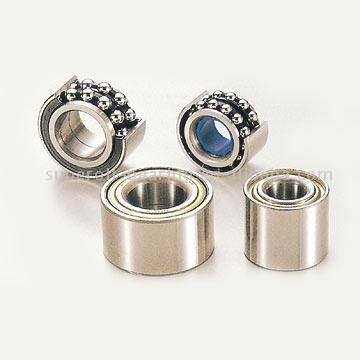Patent #4,019,103 PDF
Thanks!
Anyone can go here and download the PDF for this patent:
Patent 4019103
Thanks!
Anyone can go here and download the PDF for this patent:
Patent 4019103







 I decided to make the motor 50mm thick, that would be about 143 plates. I am ready now for gluing/bolting them together. I made a small test by gluing two spare plates together - everything holds very well. Also I wont need any insulation between plates, because the plates are already covered with a thin insulation material. In the mean time I have completed my CAD drawings. I used some Ideas form Steven. At first I wanted to use such bearings:
I decided to make the motor 50mm thick, that would be about 143 plates. I am ready now for gluing/bolting them together. I made a small test by gluing two spare plates together - everything holds very well. Also I wont need any insulation between plates, because the plates are already covered with a thin insulation material. In the mean time I have completed my CAD drawings. I used some Ideas form Steven. At first I wanted to use such bearings:




 I decided to make the motor 50mm thick, that would be about 143 plates. I am ready now for gluing/bolting them together. I made a small test by gluing two spare plates together - everything holds very well. Also I wont need any insulation between plates, because the plates are already covered with a thin insulation material. In the mean time I have completed my CAD drawings. I used some Ideas form Steven. At first I wanted to use such bearings:
I decided to make the motor 50mm thick, that would be about 143 plates. I am ready now for gluing/bolting them together. I made a small test by gluing two spare plates together - everything holds very well. Also I wont need any insulation between plates, because the plates are already covered with a thin insulation material. In the mean time I have completed my CAD drawings. I used some Ideas form Steven. At first I wanted to use such bearings:





Comment